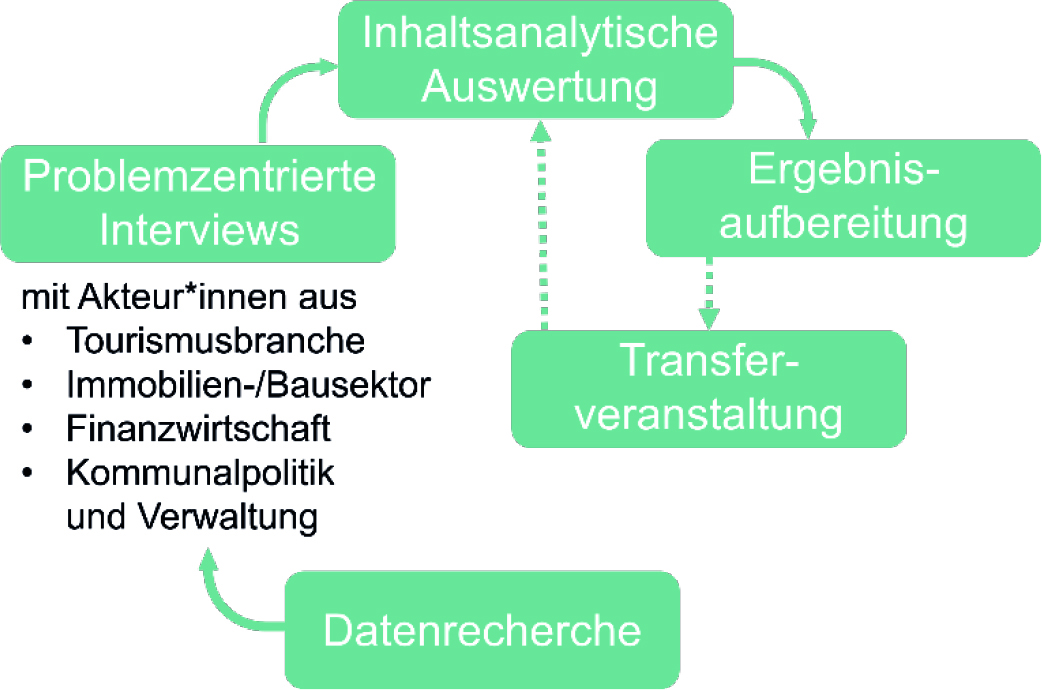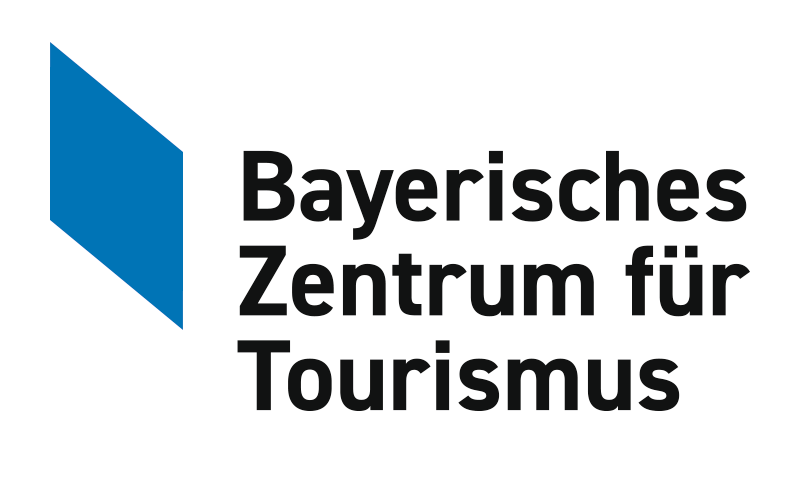GEFÖRDERTES PROJEKT 2021/2022
Schlagworte: Tourismus- und Regionalentwicklung, Zielgruppen
Nachhaltige Tourismus- und Regionalentwicklung in Garmisch-Partenkirchen zwischen Tourismus, freizeitorientierter Migration und Immobilienmarkt
© iStock.com/nogreenabovetwothousand
Tourismusintensive Klein- und Mittelstädte im bayerischen Alpenvorland sind von einem hohen Immobilienpreisniveau und überproportionalen Preissteigerungen innerhalb der letzten zehn Jahre betroffen. Bewohner stark touristisch geprägter Gemeinden konkurrieren am Wohnungsmarkt mit freizeitorientierten und touristischen Nutzungsformen von Wohnimmobilien (z. B. vermietete Ferienwohnungen und Ferienhäuser, Freizeit-Zweitwohnsitze und Altersruhesitze). Diese spezielle Immobilienmarktsituation stellt Tourismusdestinationen in Bayern zunehmend vor die Herausforderung, bezahlbaren Dauerwohnraum für die ansässige, in den Gemeinden arbeitende Bevölkerung bereitzustellen, und damit die wirtschaftliche und soziale Grundlage einer nachhaltigen Tourismusentwicklung langfristig zu sichern.
Das anwendungsorientierte Forschungsprojekt verfolgt das übergeordnete Ziel, Wechselwirkungen zwischen Tourismus und Immobilienbranche am Beispiel Garmisch-Partenkirchen zu rekonstruieren und damit eine Wissensbasis für zukünftige Entscheidungsträger in Politik und Tourismus zu schaffen.
Aufbauend auf qualitativ-empirischen Feldarbeiten in der tourismusintensiven Marktgemeinde Garmisch-Partenkirchen zeigt sich im durchgeführten Projekt, dass neben Zweitwohnsitzen vor allem Ferienwohnungen einen bedeutenden Einfluss auf die lokalen Immobilienpreisdynamiken ausüben. Der aktuelle Boom im Ferienwohnungssegment ist dabei nicht durch die lokale Tourismusbranche induziert, sondern wird hauptsächlich von immobilien- und finanzorientierten Logiken angetrieben. Die daraus resultierenden zunehmenden Investitionstätigkeiten in Freizeitwohnsitze und Ferienwohnungen wirken sich preistreibend auf den Boden- und Wohnimmobilienmarkt aus – und dies sowohl im Miet- wie auch Eigentumsmarkt.
Die Preisanstiege für Wohnimmobilien haben so in den letzten Jahren Dimensionen erreicht, die den Immobilienerwerb für die ortsansässige Bevölkerung auch mit mittleren und höheren Einkommen praktisch unmöglich machen, wenn nicht erhebliches familiäres Vermögen vorliegt. Für die Tourismuswirtschaft wiederum führt der sich verschärfende Mangel an (bezahlbarem) Wohnraum, auch im Mietwohnungsmarkt, dazu, dass Arbeitskräfte zunehmend schwerer gewonnen und in der Region gehalten werden können. Damit ist mittelfristig die Wettbewerbsfähigkeit des Tourismusstandorts gefährdet.
Qualitatives Forschungsdesign und Forschungsprozess
Eine Analyse der zentralen Verknüpfungen zwischen Tourismus, freizeitorientierter Migration und Immobilienmarkt am Fallbeispiel Garmisch-Partenkirchen erfolgt über ein in fünf Phasen gegliedertes qualitatives Forschungsdesign (siehe Abbildung).

Ungleichgewicht zwischen Dauerwohnzweck und touristischer Nutzung
Aktuelle Dynamiken am Immobilienmarkt im Zusammenspiel mit Veränderungen im Übernachtungstourismus bringen das Verhältnis von touristischer Nutzung und Dauerwohnnutzung von Wohnimmobilien aus der Balance. Dieses zunehmende Ungleichgewicht in Garmisch-Partenkirchen steht im Widerspruch zu einer nachhaltigen und damit generationengerechten Tourismus- und Regionalentwicklung. Zentrale sozio-ökonomische Folgen der Umstrukturierungsprozesse werden in den Bereichen Wohnraum, Arbeitsmarkt und Wertschöpfung identifiziert. Zentrale Erkenntnisse aus den themenzentrierten Interviews werden im Projektbericht dargestellt.
Implikationen für Praxis und Forschung
Die im Forschungsprojekt gewonnenen Ergebnisse zur Neuordnung von Tourismus und Immobilienmarkt und deren weitreichende Folgen mit Blick auf eine nachhaltige Regionalentwicklung für Garmisch-Partenkirchen lassen erhebliche Herausforderungen für eine generationengerechte, sozialverträgliche und wirtschaftsfördernde Tourismusentwicklung offenbar werden.
- Investitionen in Freizeitwohnsitze und Ferienwohnungen haben in Garmisch-Partenkirchen in den letzten Jahren zugenommen und wirken preistreibend auf den Boden- und Wohnimmobilienmarkt.
- Professionalisierte Vermittlungsangebote ermöglichen es, dass Ferienwohnungen zu einer attraktiven Finanzanlage für externe Investor*innen werden. Die Bedeutungszunahme des Ferienwohnungssegments läuft mit einer eigenständigen, hauptsächlich von immobilien- und finanzorientierten Logiken angetriebenen Dynamik ab und ist daher teilweise losgelöst von der lokalen touristischen Angebotsentwicklung.
- Immobilienpreisdynamiken entkoppeln sich von lokalen Erwerbseinkommen und betreffen direkt oder indirekt alle Einkommensschichten.
- Die Wohnimmobilienpreisdynamiken verschärfen den massiven Fachkräftemangel im Tourismus und gefährden die Wettbewerbsfähigkeit des Tourismusstandorts.
Obwohl die Problematik der stark steigenden Immobilienpreise bei allen befragten Akteuren vor Ort gesehen wird – von der Unternehmerschaft, DMO über Zivilbevölkerung bis hin zu Kommunalpolitik – werden von Seiten der politischen Entscheidungsträger in Garmisch-Partenkirchen bisher keine bzw. nicht ausreichend Gegenmaßnahmen ergriffen. Eine langfristige Zukunftsvision für den Ort und eine Strategie zur Begrenzung der touristischen Nutzung von Wohnimmobilien fehlt. Nur in einem aktiv gestalteten Zusammenspiel aller beteiligten und betroffenen Akteure aus Tourismus- und Immobilienwirtschaft, Politik, Verwaltung und Zivilgesellschaft kann der aktuell zu verzeichnenden Entwicklung im Sinne einer nachhaltigen Regionalentwicklung entgegensteuert werden.

Projektverantwortung
Projektleitung: Prof. Dr. Christian Steiner (Katholische Universität Eichstätt-Ingolstadt, Fachgebiet Humangeographie)

Projektbericht


